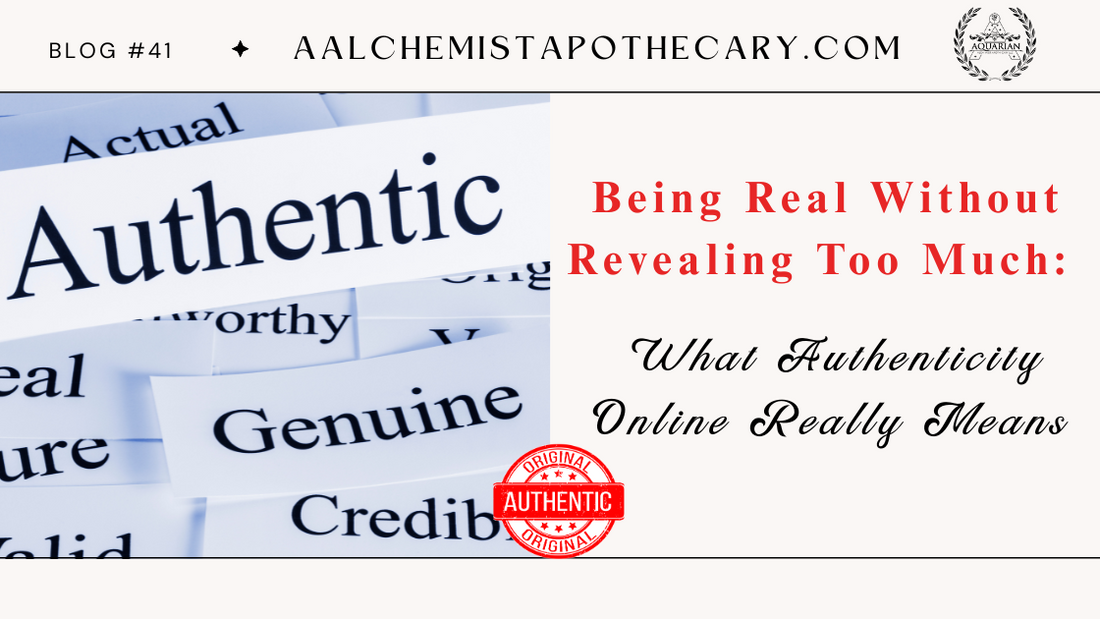Being Real Without Revealing Too Much: What Authenticity Online Really Means
Authenticity has become the newest aesthetic on social media. Scroll through any platform and you’ll notice the shift followers are no longer chasing perfection, they’re looking for people who feel real. But that begs the question: what does “being authentic” actually mean?
Does it mean filming yourself first thing in the morning, bleary-eyed and brushing your teeth with no makeup? Does it mean baring your deepest wounds on camera to prove vulnerability? For many creators, this feels uncomfortable and sometimes, it crosses into oversharing.
Here’s the truth: authenticity does not equal intimacy. You can be genuine without handing over every private detail of your life. You can be relatable without embarrassing yourself for clicks. And you can build trust with your audience without turning your feed into a confessional booth.
What Authenticity Is (and What It’s Not)
Authenticity is:
- Showing up as yourself, not as a curated character you think people want.
- Speaking in your own voice, even if it’s not perfectly polished.
- Sharing perspectives and experiences you genuinely believe in.
- Being consistent as in your values, your tone, and your message all align.
Authenticity is not:
- Oversharing personal pain just to gain engagement.
- Following trends that don’t resonate with you.
- Forcing vulnerability when you’re not ready or don’t want to go there.
- Sacrificing your boundaries just to seem “real.”
How to Be Real Without Oversharing
You don’t need to give away your deepest secrets to connect with your audience. Here are some ways to show authenticity while protecting your personal space:
- Share your process. People love behind-the-scenes moments your messy desk, your brainstorm notes, your failed attempts before the final product. These glimpses feel human without being invasive.
- Let your personality through. Humor, quirks, even your natural speaking style this is what people connect with most.
- Set boundaries. Decide in advance what parts of your life are off-limits (family, relationships, health details, etc.). Sticking to those boundaries makes sharing easier.
- Engage honestly. Reply to comments in your own voice. You don’t need a PR-approved answer for every question, just be you.
- Show don’t tell. You don’t have to announce, “I’m authentic.” People will feel it through your consistency and honesty.
Relatable vs. Private: Finding the Balance
Relatability doesn’t require raw exposure. A few examples:
- Relatable: Talking about creative burnout.
- Too much: Sharing your most private mental health struggles in real-time.
- Relatable: Laughing at a recipe that went wrong.
- Too much: Filming yourself crying after a personal argument.
Your followers want to connect, not consume your pain. They don’t need all of you, just the parts you’re comfortable sharing.
Redefining Authenticity
At its core, authenticity is about alignment: what you share online matches who you really are offline. It’s not about filters vs. no filters, or whether you ever post a tearful video. It’s about trust.
And trust doesn’t come from spilling tea on every secret. It comes from showing up consistently, sharing what feels true to you, and letting your audience see the person behind the content not every corner or closet of your personal life.
Final Thought
Being authentic online isn’t about exposure, it’s about choice. The choice to show up as yourself. The choice to share what matters to you. And the choice to draw a line where your private life begins.

